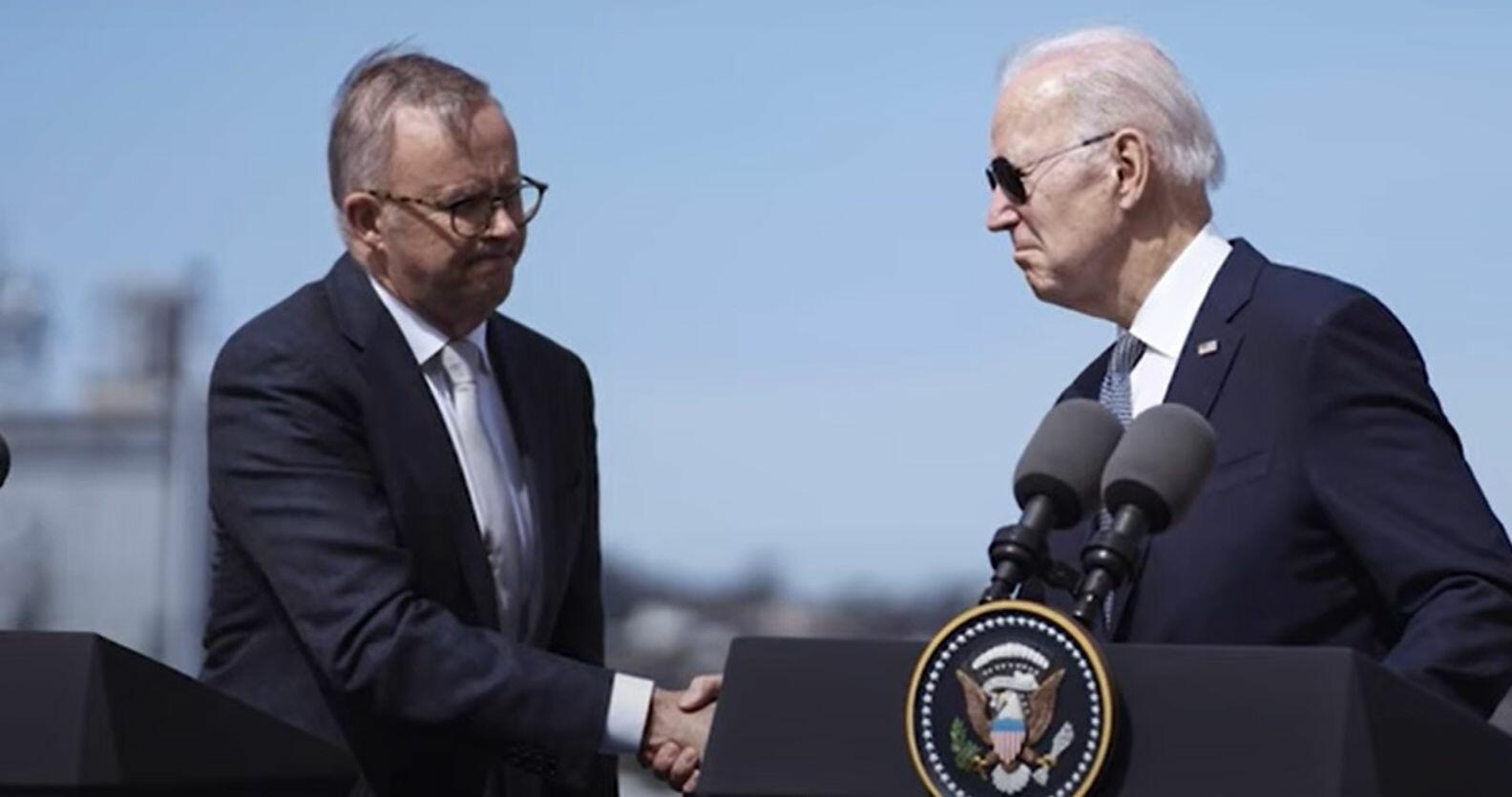- The defence chiefs of the three nations emphasised that this technology has the potential to enhance the speed and precision with which the allies can detect Chinese submarines.
- AUKUS is just one among several regional alliances that Washington has actively pursued as part of its strategy to counter the influence of Beijing.
Australia and its AUKUS allies, the United States and United Kingdom are set to deploy and test technologies such as artificial intelligence, drones, and deep space radar to counteract China’s submarines in the Pacific region.
The initiative is part of a broader strategy aimed at addressing threats to democracies in the area, with a particular focus on the challenges posed by the growing influence of China.
AI algorithms will be employed by crews conducting Pacific missions on the US Navy’s premier maritime surveillance and attack aircraft. The advanced technology is designed to swiftly process sonar data collected by underwater devices from the US, UK, and Australia.
The implementation of these AI algorithms holds the potential to enhance the speed and precision with which the allies can track Chinese submarines.
The strategic move is a response to the imperative of mitigating the impact of China’s swift military modernization and its increasing global assertiveness. Notably, these trials are part of the extensive technology-sharing agreement, Aukus Pillar II, binding the three nations.
In a recent announcement Defence Minister Richard Marles said the hi-tech push alongside his US and UK counterparts Lloyd Austin and Grant Shapps in California on Friday, with the AI systems set to be deployed on maritime patrol aircraft.
“The AUKUS partners have demonstrated and will deploy common advanced artificial intelligence algorithms on multiple systems, including P-8A Maritime Patrol Aircraft, to process data from each nation’s sonobuoys,” the joint statement from the three ministers states.
“These joint advances will allow for timely high-volume data analysis, improving our anti-submarine warfare capabilities.”
A sonobuoy, a compact sonar system, is strategically deployed from both aircraft and ships into the vast expanse of the ocean, primarily serving a crucial role in anti-submarine warfare.
The device operates by detecting and analyzing underwater sound waves, aiding in the identification and tracking of submarines.
In the broader context of military collaboration, the AI-backed tracking system plays a pivotal role in the “second pillar” of the AUKUS alliance.
Within the new framework, the United States, United Kingdom, and Australia are not only aligned in their commitment to democratic values but are also forging a collaborative front in the sharing of cutting-edge military technologies.
The joint statement commits to developing advance quantum technologies for military applications in positioning, navigation, and timing, as well as to develop an advanced deep space radar capability.
The new capabilities also aim to offer round-the-clock, all-weather global coverage for detecting, tracking, and identifying objects in deep space, thereby enhancing space domain awareness.
As part of the initial aspect of AUKUS, Australia is set to procure conventionally-armed, nuclear-powered submarines. The government also plans to invest up to $368 billion over the next three decades to acquire and develop these submarines.
Pillar I of the partnership is dedicated to strengthening Australia’s indigenous nuclear-powered submarine capabilities, leading to the collaborative development of a new submarine scheduled for deployment by 2040.
The second pillar emphasises collaboration in eight key technological domains, encompassing quantum technologies, advanced cybersecurity, and hypersonic weapons.
In the most recent annual report by the Pentagon on China’s military, it is disclosed that the nation presently possesses six nuclear-powered ballistic missile submarines, six nuclear-powered attack submarines, and 48 diesel-powered/air-independent powered attack submarines.
The report indicates that the submarine force of the Chinese navy is anticipated to increase to 65 units by 2025 and 80 units by 2035. The growth is projected despite the continuous retirement of older hulls.
Workers in the industrial sector have commenced training at the Pearl Harbor Navy shipyard in the United States and the Barrow-in-Furness shipyards in the United Kingdom to acquire the expertise needed for the construction and maintenance of nuclear-powered submarines.
Meanwhile, a recent survey found about four in 10 Australians think the government should ditch the Aukus deal if Donald Trump is re-elected.







